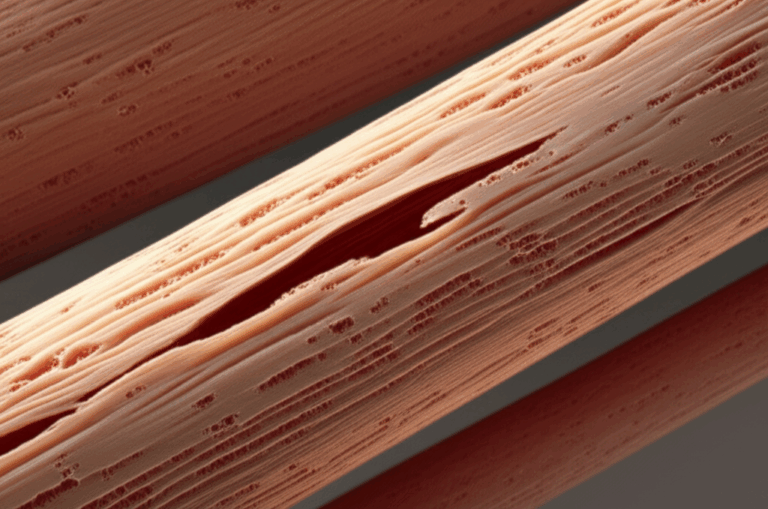Embarking on a new fitness journey is exciting, filled with the promise of increased strength, endurance, and a healthier physique. However, many beginners, and even seasoned athletes returning after a break, face a common concern: muscle breakdown. This unwelcome process, known as catabolism, can undermine your efforts if not properly managed. Understanding how to safeguard your muscles from breaking down is crucial for sustainable progress and achieving your fitness goals.

Understanding Muscle Catabolism
Muscle catabolism is a metabolic process where your body breaks down muscle tissue, primarily to use amino acids (the building blocks of protein) for energy or other bodily functions. While a certain degree of muscle protein breakdown occurs naturally, especially during intense exercise, excessive catabolism can lead to a net loss of muscle mass, strength, and can hinder recovery. It often happens when the body is under stress, such as from insufficient calorie intake, overtraining, or inadequate rest, forcing it to consume its own tissues for fuel.
When you start a new workout routine, your muscles are subjected to novel stresses. This can initially cause microscopic tears in muscle fibers, triggering a repair process that, with proper support, leads to growth. However, without the right strategies, this stress can tip the balance towards excessive breakdown rather than beneficial rebuilding.

Key Strategies to Prevent Muscle Breakdown
Preventing muscle breakdown requires a multi-faceted approach focusing on proper training, nutrition, hydration, and recovery.
Implement Progressive Overload Wisely
Progressive overload is the principle of gradually increasing the stress placed on your muscles over time, whether by increasing weight, repetitions, sets, or decreasing rest times. This challenges your muscles to adapt and grow stronger, preventing plateaus.
- Start Gradually: When beginning a new routine, resist the urge to do too much too soon. Excessive intensity or volume without proper conditioning can lead to overtraining, injury, and increased muscle breakdown. Begin with manageable weights and repetitions, focusing on mastering proper form.
- Listen to Your Body: Pay attention to signs of excessive fatigue, persistent soreness, or decreased performance, which can indicate you’re pushing too hard without adequate recovery.
- Vary Your Workouts: Incorporate a balanced routine that includes resistance training (at least two to three times a week) alongside cardio. Even aerobic exercise can contribute to muscle hypertrophy by reducing catabolic factors.
Optimize Your Nutrition for Muscle Preservation
Nutrition is arguably the most critical factor in preventing muscle breakdown and supporting muscle growth.
Prioritize Protein Intake
Protein is essential for the repair and rebuilding of muscle fibers damaged during exercise.
- Adequate Quantity: Aim for a high protein intake, especially if you’re actively working out. Recommendations often range from 1.2 to 1.6 grams of protein per kilogram of body weight per day. For some, 20-35 grams of high-quality protein per meal can be beneficial.
- Spread Throughout the Day: Distribute your protein intake across multiple meals to continuously supply your muscles with amino acids. This sustained release supports muscle protein synthesis (MPS), the process by which new muscle proteins are created.
- Quality Sources: Focus on lean protein sources such as chicken, fish, eggs, dairy (like whey protein), legumes, and tofu. Amino acids, particularly leucine, are vital for muscle preservation.
Don’t Neglect Carbohydrates and Healthy Fats
While protein takes center stage for muscle building, carbohydrates and fats play crucial supporting roles.
- Carbohydrates for Energy: Carbohydrates are your body’s primary energy source. Adequate carbohydrate intake ensures your body uses carbs for fuel, sparing protein for muscle repair and growth. They also replenish glycogen stores in muscles, which are depleted during exercise, improving performance and recovery.
- Healthy Fats: Healthy fats provide sustained energy, support hormone production, and contribute to overall satiety. Include sources like avocados, nuts, seeds, and olive oil.
- Sufficient Calories: Ensure your overall caloric intake meets your energy expenditure. A significant caloric deficit, especially when combined with intense exercise, can force your body into a catabolic state to find fuel, leading to muscle loss.
Prioritize Hydration
Water is more than just a thirst quencher; it’s fundamental for virtually all bodily functions, including those critical for muscle health.
- Cellular Function: Water is essential for cellular processes, including protein synthesis, which is vital for muscle repair and growth. Dehydration can impair these processes, hindering recovery.
- Nutrient Transport: Water acts as a transporter, shuttling essential nutrients, such as amino acids and glucose, to muscle cells for repair and growth, and removing metabolic waste products like lactic acid.
- Electrolyte Balance: Proper hydration helps maintain electrolyte balance, crucial for muscle contractions and preventing cramps.
- How Much to Drink: General recommendations suggest 2-3 liters of water daily, with increased intake around workouts. Consider electrolyte drinks during and after intense or prolonged exercise to replenish lost fluids and minerals.
Embrace Rest and Quality Sleep
Recovery is when your muscles actually grow and adapt. Without sufficient rest, your body remains in a stressed state, making muscle breakdown more likely.
- Quality Sleep: Aim for 7-9 hours of quality sleep per night. During deep sleep, your body releases growth hormone, which is vital for muscle repair and growth, and regulates cortisol (a stress hormone that can inhibit muscle growth). Insufficient sleep can decrease muscle protein synthesis and negatively alter hormone levels.
- Incorporate Rest Days: Schedule regular rest days into your workout routine to allow your muscles time to repair and adapt. Active recovery, like light stretching or walking, can also be beneficial on these days. Persistent excessive soreness often indicates inadequate recovery.
Smart Training Practices
How you structure and execute your workouts significantly impacts muscle preservation.
- Warm-up and Cool-down: Always begin your workouts with a proper warm-up to prepare your muscles and reduce injury risk, and end with a cool-down to aid recovery.
- Focus on Form: Prioritize correct form over lifting heavy weights. Poor form can lead to injury and reduce the effectiveness of the exercise, hindering muscle growth and potentially causing breakdown.
- Avoid Overtraining: Be mindful of the overall volume and intensity of your training. Overtraining can lead to persistent fatigue, decreased performance, and an increased risk of muscle loss and injury.
- Consider Professional Guidance: Especially when starting a new routine, consulting with a certified personal trainer or nutritionist can provide personalized advice tailored to your body and goals, helping you avoid common pitfalls that lead to muscle breakdown.
By proactively integrating these strategies into your new workout routine, you can effectively prevent muscle breakdown, optimize your recovery, and build a stronger, healthier physique. Remember, consistency and a holistic approach are key to long-term success.







